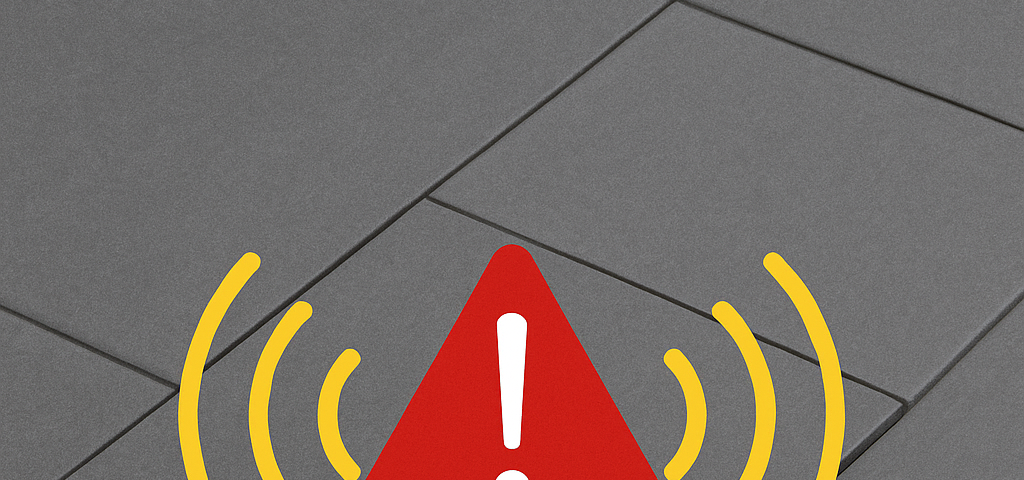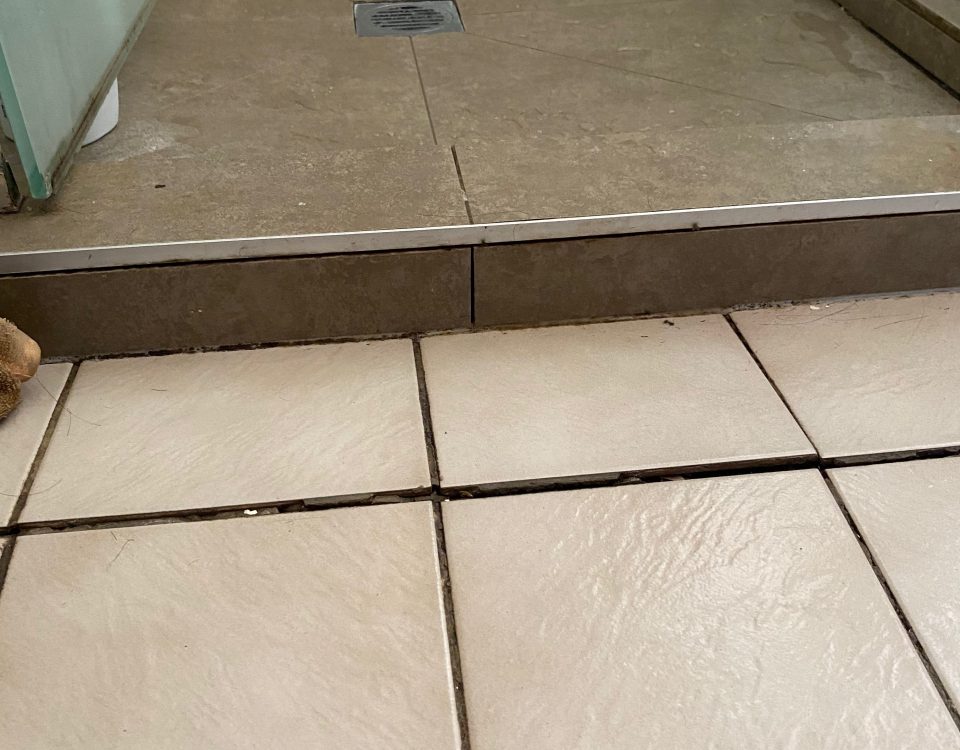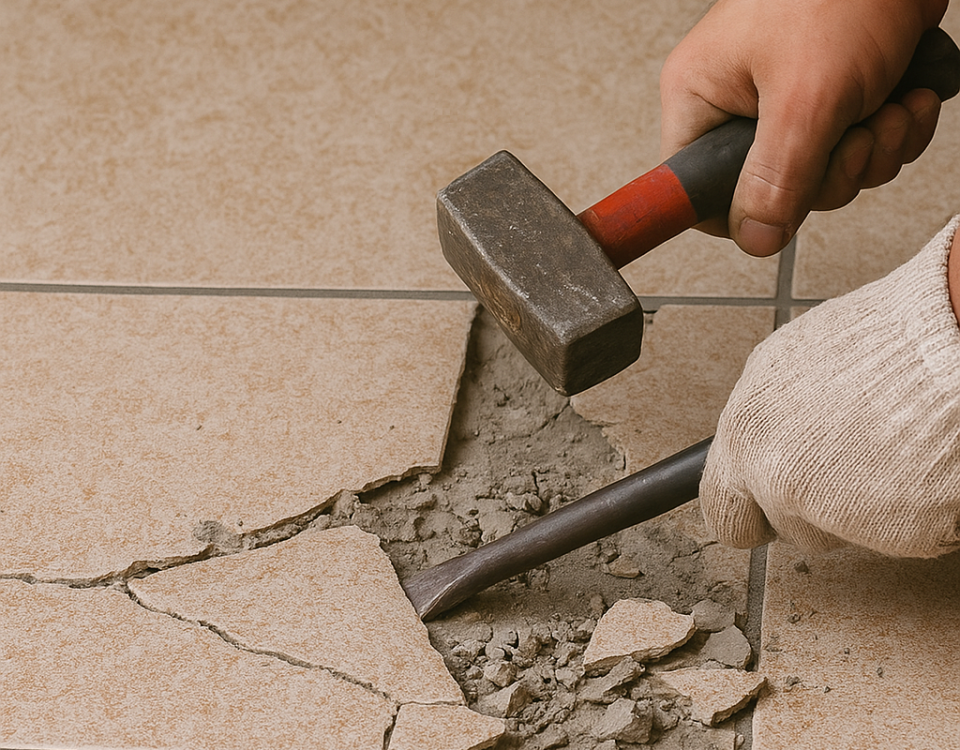
The Top 10 Tiling Mistakes We See in Auckland Homes
August 12, 2025If your tiles make a hollow sound when you walk over them or tap them, it usually means they are not fully bonded to the surface underneath. This might not always be visible, but it is a sign that the adhesive has weakened or separated, leaving air gaps between the tile and the substrate.
At Ray Tiling, we often inspect bathrooms and floors where homeowners notice this problem. Understanding the cause can help you have an informed opinion about what is really happening beneath your tiles and whether professional repair is needed.
Incomplete Adhesive Coverage
If tile adhesive was not applied evenly or the tiles were not pressed properly during installation, air pockets form underneath. Over time, these voids cause tiles to sound hollow and may eventually loosen.
Unfortunately, some installers try to save time by “spot fixing”, which means placing blobs of adhesive in the corners and centre of the tile instead of spreading a full, even layer. While it helps them finish faster, it leaves large unbonded areas underneath the tiles. These hollow spots reduce strength, allow movement, and often lead to cracking or debonding later.
Another common shortcut is not back-buttering the tiles, especially with large-format or porcelain tiles. Back-buttering involves applying a thin, even layer of adhesive directly to the back of the tile before it is laid. This step helps achieve maximum contact with the adhesive bed and ensures a solid bond.
While some adhesive types are designed to achieve full coverage without back-buttering, skipping this step in situations that require it can leave voids and weak points that lead to hollow sounds and eventual lifting.
Installation on an Improper or Unstable Substrate
Even perfect adhesive work cannot make up for a poor foundation. If tiles are installed on a substrate that is unstable, damp, or not properly prepared, the adhesive will eventually fail.
Common examples include:
-
Untreated timber or particleboard floors that flex under weight
-
Crumbling or uneven screeds that were not levelled or cured properly
-
Substrates contaminated with dust, paint, or sealers that prevent bonding
When the substrate moves, cracks, or absorbs moisture, the adhesive bond weakens and the tiles begin to lift or sound hollow. Temperature changes and vibration also cause slight movement, which over time can break the connection between the tile and the surface beneath.
The substrate must always be clean, stable, level, and dry before tiling begins. Without proper preparation, no adhesive can maintain long-term adhesion, and hollow tiles are often the result.
Moisture Damage
Water that seeps through failed grout or waterproofing can weaken the adhesive underneath. This is a frequent issue in bathrooms or showers, where small leaks slowly cause tiles to lift away from the substrate.
Wrong Adhesive Type or Application
Using the wrong adhesive for the tile type or surface can lead to poor bonding. Large-format tiles, porcelain, and natural stone often require specific adhesives with stronger bonding and flexibility.
Another common issue occurs when tiles are installed outside the adhesive’s workable time. Every adhesive has a limited period after mixing or spreading when it remains tacky enough to bond properly. If the adhesive begins to dry before the tile is laid, it forms a weak skin on the surface that prevents full adhesion.
Installers rushing through large areas or working in hot, windy conditions often overlook this. The result is poor bonding strength, air pockets under the tile, and that familiar hollow sound soon after installation.
Lack of Expansion Joints
Tiles naturally expand and contract. If the installer did not include movement joints, the pressure causes tiles to push against each other until the weakest points start lifting or sounding hollow.
Contamination or Dust on the Surface
If the substrate was dusty, oily, or had old adhesive residue, it prevents a full bond. Even a thin layer of dust can stop the adhesive from gripping properly.
When to Worry
Some areas are more crucial than others. High-traffic areas will almost always develop cracks if tile adhesion is failing, as constant movement and weight increase strain on the bond.
In contrast, wall tiles that were spot fixed may remain intact for years because they experience little stress, though they are still not ideal.
In wet areas, hollow tiles can point to much deeper issues involving moisture or leaks. If this occurs, especially on the second story of a house, it can lead to water damage in the structure below. At that stage, it may be worth considering a full bathroom renovation.
Unfortunately, wet areas cannot be repaired or have tiles replaced while still remaining PS3 compliant, as removing or altering tiles breaks the sealed waterproofing system. The only compliant fix is to re-waterproof and re-tile the affected area.
What You Should Do
If you notice hollow sounds under your tiles, it is best to get a professional inspection before the problem spreads. Our team at Ray Tiling can assess whether tiles are still secure or if the area needs re-tiling or waterproofing work. Acting early helps prevent further damage and costly repairs.
Think your tiles might be coming loose?
Contact Ray Tiling today for a professional inspection and expert advice on keeping your tiles strong, safe, and compliant.




